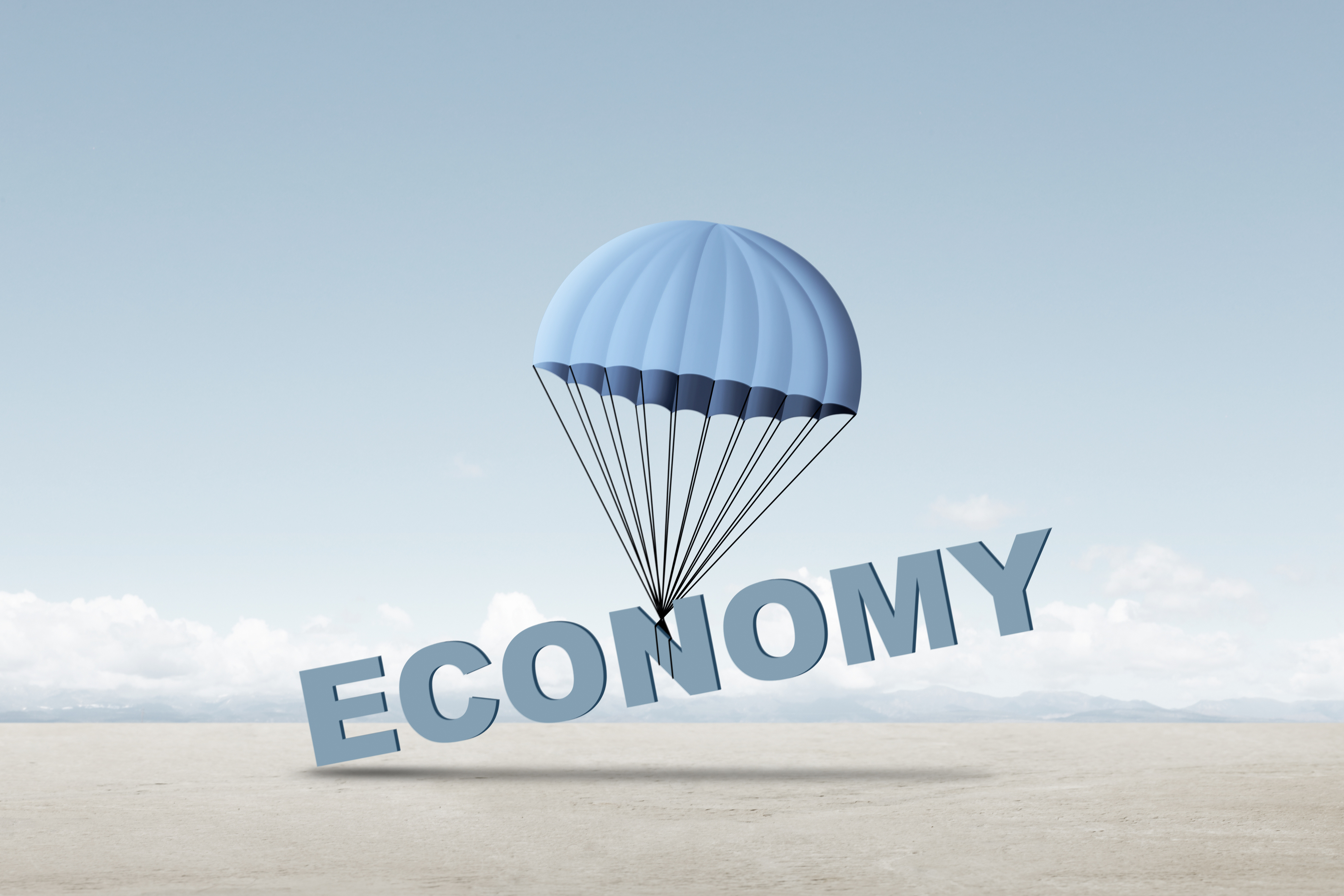The biggest factor in accounting for the strength in the economy is the continuing importance of the wealth effect in sustaining consumption by the affluent.
Late summer festivals have long been traditional high points in the world of arts and music. Nowadays, courtesy of the Federal Reserve Bank of Kansas City, central bankers repair to their own version of Bayreuth or Salzburg: the conference held in late August in Wyoming at the Jackson Lake Lodge in Grand Teton National Park.
This year’s gathering focused on the effectiveness of monetary policy. In marked contrast to some earlier conclaves, the mood was upbeat. Visibly relieved central bankers could be seen celebrating the fall of inflation, which had come down from a peak of around 10% in early 2022 to below 3%. They were happy to take a few victory laps, crediting themselves with an ultimately successful policy response to the sudden surge in inflation (Powell 2024). Their greatest source of pride appeared to reside in their ‘credible commitment’ to defeat inflation, which, in the official narrative, sent a decisive signal to markets, firms and workers that central banks would do “whatever-it-takes” to restore price stability.
To communicants, it was this steadfast commitment that choked off a 1970s-style wage-price inflationary spiral, by keeping inflation expectations ‘anchored’, as central bankers are fond of saying. As a result, they thought, inflation has come down without triggering a deep recession, a feat few mainstream economists had predicted.
But how much credit does the Federal Reserve actually deserve? Is the remarkable macroeconomic turnaround testimony to the Fed’s credibility, determination, and wisdom? Or it is just down to good luck that inflation fell without a sharp rise in unemployment?
Our new INET Working Paper analyzes claims that the Fed is principally responsible for the decline of inflation in the U.S. We compare several different quantitative approaches. These show that at most the Fed could plausibly claim credit for somewhere between twenty and forty percent of the decline.
The paper then examines claims by central bankers and their supporters that a steadfast Fed commitment to keeping inflationary expectations anchored played a key role in the process. The paper shows that it did not. The Fed’s own surveys demonstrate that low-income Americans did not believe assurances from the Fed or anyone else that inflation was anchored. Even a recent study by the International Monetary Fund (see Gourinchas 2024) concludes that expectations were empirically irrelevant in determining the recent rise and the subsequent decline in inflation.
The U.S. inflation rate actually fell because global supply-side constraints eased and food and energy prices weakened with the passage of time. Dollar appreciation helped by lowering the U.S. dollar cost of imports and by weakening export demand for American goods. The Biden administration also released stocks from the strategic petroleum reserve at key moments and made fitful efforts to resolve chaos at ports.
But a major factor in the decline is the simple fact that America’s workers were, in general, unable to raise their nominal wages in line with the rise in the cost of living. Falling real wages absorbed the shock to the price level, unlike in the 1970s, when U.S. workers (and unions) could still protect their real wages against rising inflation. We present clear evidence contradicting popular claims, e.g., by Autor et al. (2023), that COVID or the advent of the Biden administration ushered in a radical structural transformation of the U.S. labour market in favour of the least advantaged workers. If only this were true.
Based on our analysis it is clear that central bankers are claiming credit for developments that were mostly beyond their control. The issue is larger than just the their customary hubris, because Jackson Hole’s self-congratulatory assessment of monetary policy is legitimating a new round of what John Kenneth Galbraith (1973) called “Useful Economists,” propping up a fundamentally broken macroeconomic model in which the ‘inflation-expectations channel’ plays the central role in wage-price dynamics. The celebration also distracts from the continuing Fed failures to grapple with, or even to recognize, key factors that are still fuelling inflation, especially in services.
The paper then takes up the obvious question of why steep rises in interest rates have not so far led to big rises in unemployment. We show that recent arguments by Benigno and Eggertson that shifts in vacancy rates can explain this are inconsistent with the evidence. Benigno and Eggertson (and many others) treat the job openings data with no sense of their fragility. They take no account of faux positions or their likely seismic increase once COVID hit. We think the vacancy data are worthless as evidence about the real state of labour markets.
The biggest factor in accounting for the strength in the economy is the continuing importance of the wealth effect in sustaining consumption by the affluent. This arises, as we have emphasized in several earlier papers (Ferguson and Storm 2023, 2024a, 2024b, 2024c), from the Fed’s quantitative easing policies. Absent sharp declines in wealth, the continuing importance of the wealth effect is likely to feed service sector inflation in particular. So, we think, will climate change and continuing shocks from a multipolar world economy. In the US, regulatory weakness in the face of intense money politics is also likely to threaten price stability as demand for electricity soars from firms in artificial intelligence and crypto currency mining.
References
Autor, D., A. Dube, and A. McGrew. 2023. ‘The Unexpected Compression: Competition at Work in the Low Wage Labor Market.’ NBER Working Paper No. 31010. Cambridge, Mass.: National Bureau of Economics Research. http://www.nber.org/papers/w31010
Benigno, P. and G.B. Eggertsson. 2024. “Insights from the 2020s Inflation Surge: A Tale of Two Curves.” Paper presented at “Reassessing the Effectiveness and Transmission of Monetary Policy,” a symposium sponsored by the Federal Reserve Bank of Kansas City, held in Jackson Hole, Wyoming, August 22–24.
Ferguson, T. and S. Storm. 2023. “Myth and Reality in the Great Inflation Debate: Supply Shocks and Wealth Effects in a Multipolar World Economy.” International Journal of Political Economy 52 (1): 1-44. Link: https://www.tandfonline.com/doi/full/10.1080/08911916.2023.2191421
Ferguson, T. and S. Storm. 2024a. “Trump versus Biden: The Macroeconomics of the Second Coming.” INET Working Paper 221. New York: Institute for New Economic Thinking. Link: https://www.ineteconomics.org/research/research-papers/trump-versus-biden-the-macroeconomics-of-the-second-coming
Ferguson, T. and S. Storm. 2024b. “The Fed’s “Chicken Run”: Why Sticking with High Rates Will Crash the Economy.” INET Blog, June 24. Link: https://www.ineteconomics.org/perspectives/blog/the-feds-chicken-run-why-sticking-with-high-rates-will-crash-the-economy
Ferguson, T. and S. Storm. 2024c. “A New Era of Endless Labor Shortages? A Critical Analysis of McKinsey’s New Report.” INET Blog, July 15. Link: https://www.ineteconomics.org/perspectives/blog/a-new-era-of-endless-labor-shortages-a-critical-analysis-of-mckinseys-new-report
Galbraith, J.K. 1973. “Power and the Useful Economist.” American Economic Review 63 (1): 1-11.
Gourinchas, P.-O. 2024. “Global Growth Steady Amid Slowing Disinflation and Rising Policy Uncertainty.” IMF Blog, July 16. Link: https://www.imf.org/en/Blogs/Articles/2024/07/16/global-growth-steady-amid-slowing-disinflation-and-rising-policy-uncertainty
Powell, J. 2024. “Review and Outlook.” Speech at the Jackson Hole Symposium, August 23. Link: https://www.federalreserve.gov/newsevents/speech/powell20240823a.htm






